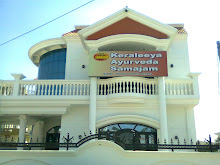INTRODUCTION OF AYURVEDA
Method of knowing
Objective observation as envisaged by Descartes and Newton in 17th century. Studying the properties of matter that could be identified by shapes weights numbers movements etc.. Whole is understood by the study of its parts. Analysis and reductionism are the activity of breaking an observation in order to find the rationality.
20th century witnessed the collapse of structure after the theory of uncertainty by Albert Einstein ..
Absolute existence is immaterial , but negation of the absolute nothingness never happens.. hence fact and negation become the same..
The observation cannot be objectified in absolute state of existence in a describable manner in space and time..
In the development of science natural concepts were abandoned, concepts such as quark, energy were introduced, and concepts such as mass,space and time were revised.
Theory of knowing in ancient period
Epistemic approach ..truth is the fundamental epistemic concern and propositions are the bearers of truth..
Conceptual systems with inferential patterns ..conceptual roles are specific in different ways..
Universal propositions , logic and reasonability become the basis of knowing things. Personal insight of human reason..
Physical world was proved to be the most basic objects of our perceptions..
The final conviction is that the reality in material plane is the properties of our five senses.. we can think only in terms of the properties of our sense perceptions.. knower known and the knowledge become unified .
Text proposes the perfect structure of science.. Basics of Ayurveda is an elaboration of theories of physical science on the basis of logic and reasonability..The mark of a genuine idea is that its possibility can be proved , either a priori by conceiving its cause or reason , or a posteriori when experience teaches us that it is a fact in nature..
Ayurvedic concepts.
Introduction of new concepts in the science at time to time helped the development of knowledge ..
Pre Vedic period , Vedic period , post Vedic period , samhitha period , post samhitha period were the land marks in the history of Indian sciences..
Ayurveda is considered the upaveda –accessory- of Vedas mainly Atherva veda , and the others are Rig,Yajur and Sama ..
Conceptual relations..
The term Veda means knowledge .. It is the wisdom of the universe..
The six systems of Indian philosophy –shad Darsanas means vision- are concerned with intellectual analysis to comprehend the theory of nature , ie Sankhya(Kapila),Nyaya(Gouthama),Yoga(Patanjali),Vaiseshika(Kanada), Uthara Meemamsa and Poorva Meemamsa (Jaimini,Vyasa)..
Sankhya-Italic philosophy of Pythagorus.. Enumeration in genesis
Yoga – Stoic philosophy of Zeno(Greek philosopher)..Indian metaphysics psychology..way of life.
Nyaya - Aristotle peripatetic.. Greek philosophy…Logic and reasoning
Vaiseshika-Ionian philosophy of Thales ..Exploration of matter and spirit
Meemamsa –Psychagogia of Socrates..Karma …performing rituals..
Concept of matter
Matter is considered the invariable associate of properties and functions.
The knowledge is the result of the interaction of sense and sense objects..
Material plane …Pancha bhootha (five element theory)..Bhootha means that which has came into being..subtle state of existence..
Akasha..Vayu..Agni…Jala…Pridhvi.
Epistomologically the gross structure is the result of a seqential transformation from Akasha to the state of pridhvi gaining mass of the five composites..
This five planes symbolically represent the five senses..each having its own properties and functions in the universal and physical level..
The knowledge of matter (dravya) is essentially related to its constituents
ie panca mahabhutas ( five subtle elements - akasa , vayu , agni , jala , prithvi
PROPERTIES AND THEIR UNITS OF ACTIVITY
They are the invariable attributes of the matter 10 v/s 10 pairs of properties are described in Ayurveda..each pair defines a continuum of activity..
A property is the tendency towards or away from one of the opposites based on the principle of opposites..)
Guru (Heavy)
Weight
Laghu (Light)
Seetha (Cold)
Temperature
Usna (Hot)
Snigdha (Unctuousness)
Emollient
Rooksha (Dry)
Mandu (Dull)
Intensity
Teekshna (Sharp)
Sthira (Immobile)
Fluidity
Sara (Mobile)
Mridu (Soft)
Rigidity
Katina (Hard)
Visada (Clear)
Adhesion
Pichila (Slimy)
Slakshna (Smooth)
Texture
Khara (Rough)
Sukshma (Fine)
Density
Sthoola (Bulk)
Sandra (Solid)
Viscosity
Drava (Fluid)
Dosha concept
• Vaata, Pitta and Kapha-Tridosha
• Vaata- Constituents: Aakasha and Vaayu
• Pitta- Constituents: Agni and Jala
• Kapha- Constituents: Jala and Prithvi
Functions
• Comprehends various factors and functions in the system.
• Vaata: Principle of movement (motion-state of gas).
• Pitta: Principle of change, transformations (energy-state of liquid)
• Kapha: Principle of solidity, cohesions (mass-state of solid)
THANK YOU
Monday, March 30, 2009
Ayurveda
Posted by
Vedangi Ayurveda Kendra
at
12:13 AM
Subscribe to:
Post Comments (Atom)


No comments:
Post a Comment